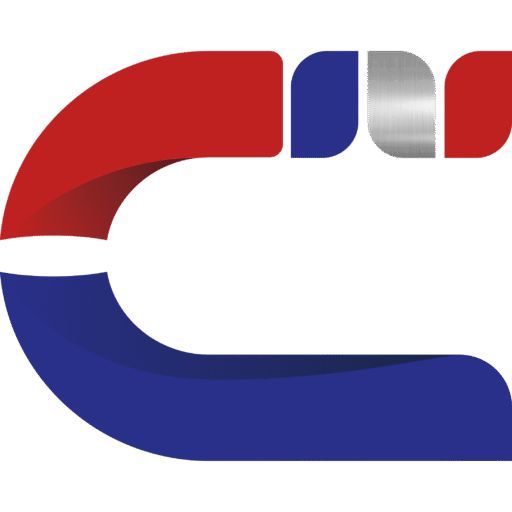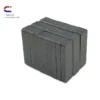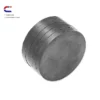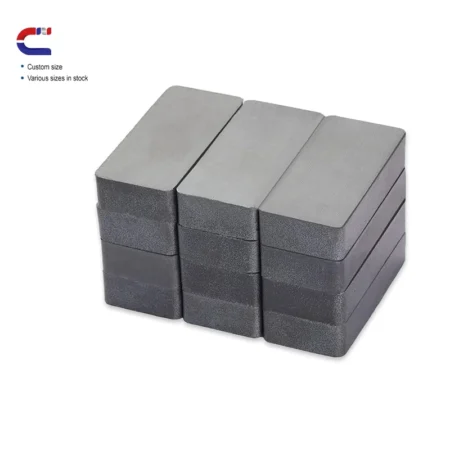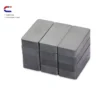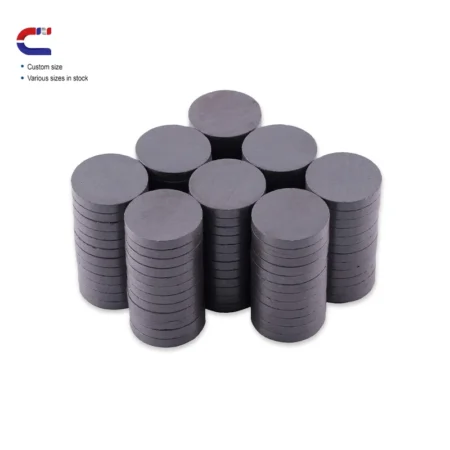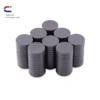Ferrite magnets are a type of permanent magnetic material made by sintering iron oxide with metal oxides such as cobalt, nickel, zinc, and manganese. They are non-metallic magnetic materials and are widely used in various fields due to their low cost and stable performance.
Main Classifications
Ferrite magnets can be divided into two categories based on their crystal structure and performance:
Permanent Ferrites (Hard Magnets)
Common Types: Barium Ferrite (BaFe₁₂O₁₉) and Strontium Ferrite (SrFe₁₂O₁₉).
Features: High coercivity (strong resistance to demagnetization), long-term magnetism, and low cost. However, their magnetic energy product (an indicator of magnetic strength) is low, typically between 1.0 and 4.0 MGOe.
Soft Ferrites (Soft Magnets)
Common Types: Manganese-Zinc Ferrite (MnZn) and Nickel-Zinc Ferrite (NiZn). Features: Low coercivity, easy to be magnetized and demagnetized, mainly used in high-frequency electromagnetic conversion scenarios (such as transformers, inductors), with good high-frequency magnetic permeability and insulation.
Ferrite magnet products
Ferrite Grade Information
Ferrite magnets are usually named with “Y” at the beginning of their grade. Common grades include Y10T, Y22H, Y26H, Y27H, Y30, Y30BH, Y30H-1, Y30H-2, Y35, etc. Specific parameters of some grades are as follows:
| Grade | Br(mT) | Br(Gs) | HcB(kA/m) | HcB(Oe) | HcJ(kA/m) | HcJ(Oe) | BHmax(kJ/m³) | BHmax(MGOe) |
|---|---|---|---|---|---|---|---|---|
| Y22H | 310-360 | 3100-3600 | 220-250 | 2770-3140 | 280-320 | 3520-4020 | 20.0-24.0 | 2.5-3.0 |
| Y26H | 360-390 | 3600-3900 | 220-250 | 2770-3140 | 225-255 | 2830-3210 | 23.0-28.0 | 2.9-3.5 |
| Y27H | 370-400 | 3700-4000 | 205-250 | 2580-3140 | 210-255 | 2640-3210 | 25.0-29.0 | 3.1-3.7 |
| Y30BH | 380-400 | 3800-4000 | 223-235 | 2800-2950 | 231-245 | 2900-3080 | 27.0-30.0 | 3.3-3.8 |
| Y30H-1 | 380-400 | 3800-4000 | 230-275 | 2890-3460 | 235-290 | 2950-3650 | 27.0-32.0 | 3.4-4.0 |
| Y30H-2 | 395-415 | 3950-4150 | 275-300 | 3460-3770 | 310-335 | 3900-4210 | 28.5-32.5 | 3.5-4.1 |
In addition, there are some other naming methods. For example, the United States and the United Kingdom still use the naming rules starting with “C”, such as C5, C8, etc., among which C5 is also called Y30, and C8 is also called Y30H-1.
